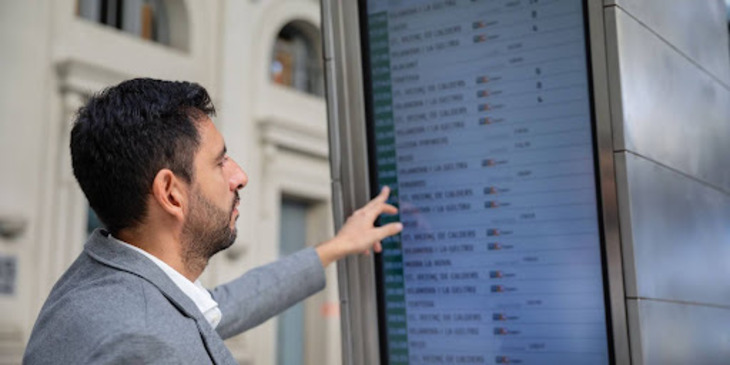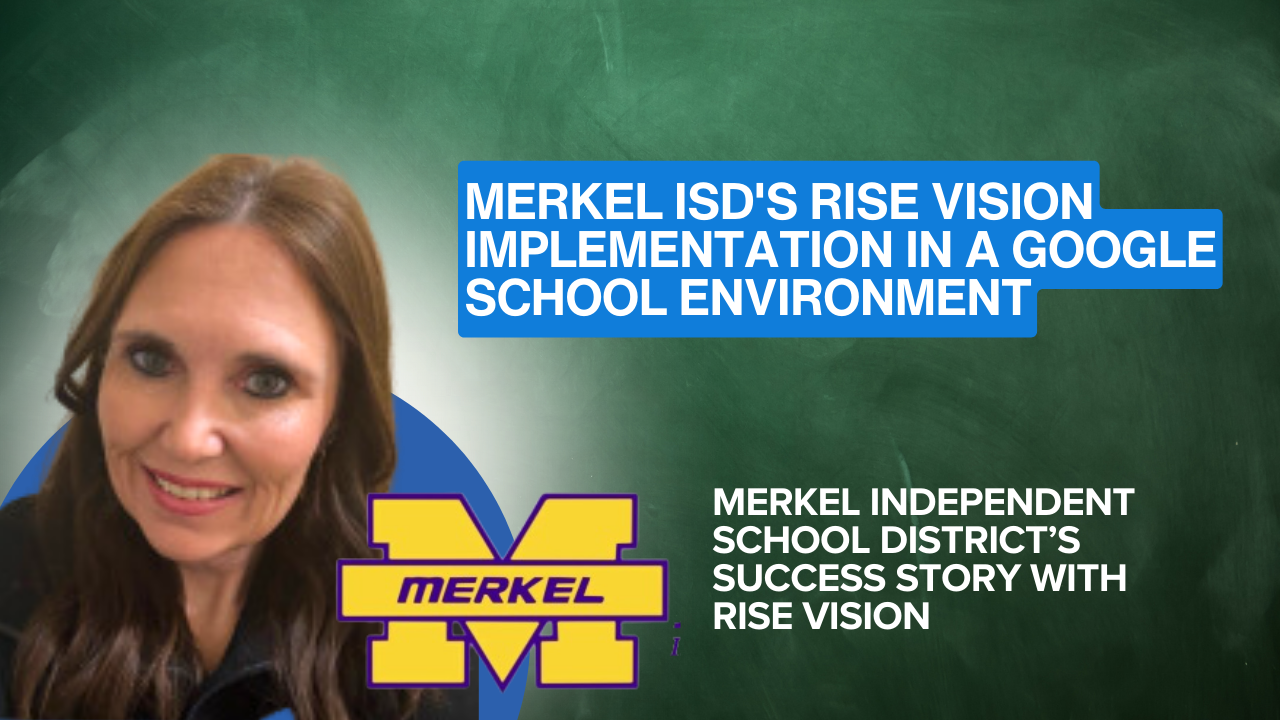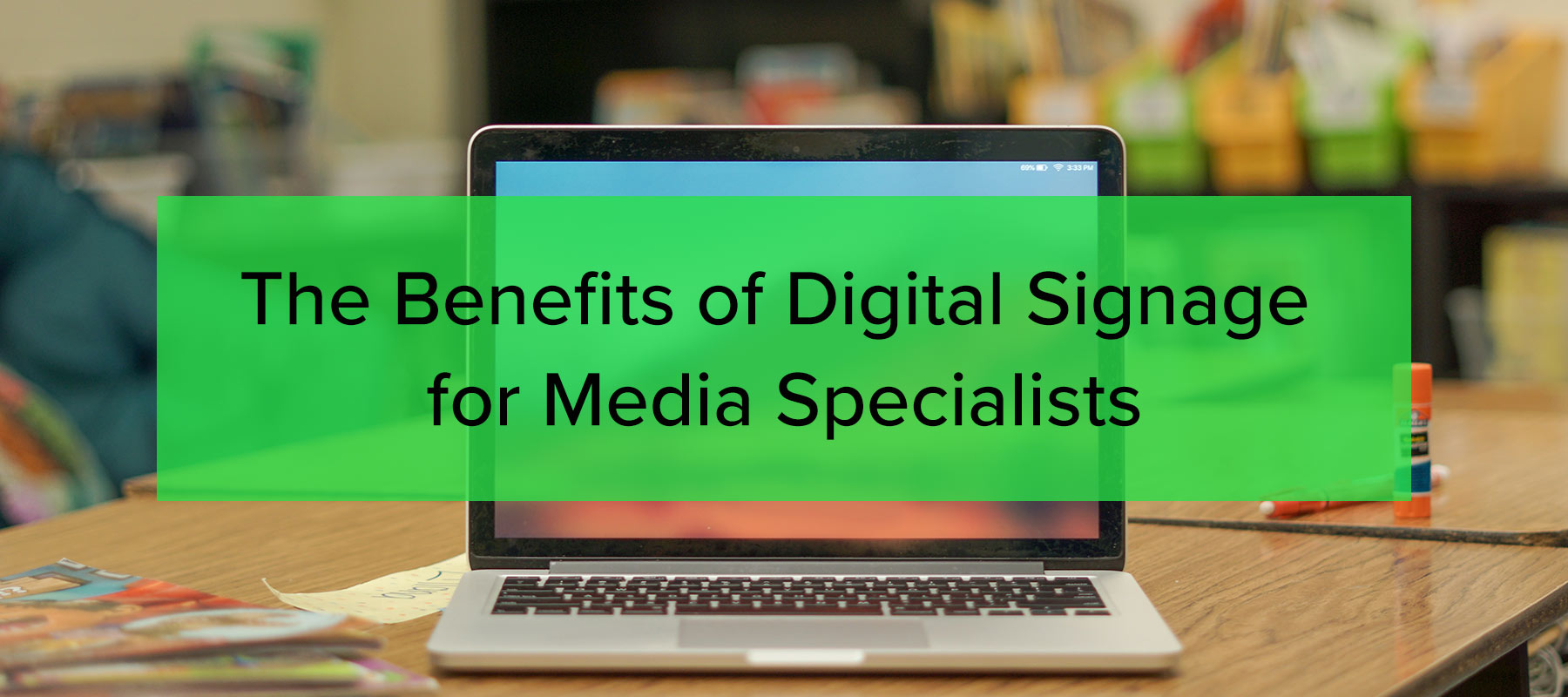
School communication often falls to administration staff to manage. And it’s often insufficient. It’s a long-time problem, one that’s been showing up in academia and the press since the 1960s. Without a robust system of internal communications, schools struggle to pass information to the right people quickly enough. However, modern, centrally-controlled digital signage solutions can put highly effective communication tools in the hands of school admin staff and help make schools more effective, welcoming and efficient.
The whole school benefits from digital signage
There are some general, whole-school benefits to using digital signage:
Asynchronicity and responsiveness
Asynchronous communication is when you can leave someone a message, and they can read it later. Messaging apps are asynchronous: you WhatsApp someone, they read it and reply in their own time. Responsive communication can change according to circumstances, and allow recipients to respond.
Live announcements, over tannoy systems or in person, can be responsive and timely, but they’re not asynchronous. You have to be there to transmit the message. Static signage is asynchronous: set it up and walk away. The visitors who need to know the way to the auditorium, or the eighth-graders who need to know that their homework is due on Friday, can read it when they arrive. But if something changes in the interim, you’re stuck with the same old signage.
Digital signage can cover both bases. It can offer real-time information — sometimes including Twitter or other social feeds, or live announcements from Federal agencies. And it can be totally asynchronous, with template-based, purpose-specific signs ready to go out to the right part of the school at the right time, depending on what’s happening.
Cost-effectiveness
In the past, schools have been faced with a difficult choice: signage solutions were either largely ineffective, but affordable, or they were expensive, difficult to administer — and often still unsatisfactory. Without centralized control, digital signage still has advantages over traditional static signage: it captures up to 400% more views, is remembered more and discussed more, and is preferred by audiences. But it’s still time-consuming and costly to deliver, and one of its biggest advantages — a good fit between messages and audiences — is lost. When you have teachers or admin staff walking around the school with flash drives to upload new signage to separate displays, a lot of valuable time is being wasted.
When digital signage is centrally controlled, by contrast, schools can publish an endless stream of accurately targeted content to specific audiences, with minimal time investment and zero additional monetary costs.
In addition to the general benefits, administrators specifically can use digital signage to make their jobs easier, communicating more effectively with teachers and students, improving cohesive responses to emergencies, helping newcomers to find their way around the school and improving school culture. It can even improve behavioral and academic outcomes.
Communicating with teachers
Sometimes, administrators need to be able to communicate directly with the teaching staff. That might be to remind teachers of changes in school policies or upcoming events in ways that students don’t need to see. Or it might be messaging intended to encourage staff performance. Sometimes, staff need to see emergency messaging that students don’t. Other times, it’s just memos, designed to keep teaching staff on the same page as leadership and each other.
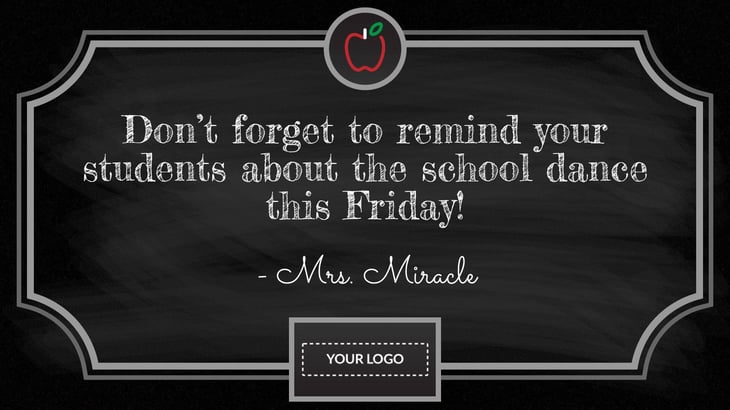
Get started with this teachers' lounge digital signage template here.
Digital signage can allow administrators to address staff directly in spaces like staff-only cafeterias and teachers’ lounges. Centrally-controlled digital signage tools can be used to communicate with staff in real-time, meaning urgent messages or scheduled reminders can be shown with equal ease and without a ton of work being added to an administrator’s already full schedule.
Real-time updates
Real-time updates are an obvious benefit of digital signage. The most commonly referenced element of the real-time communication capacity of digital signage is emergency messaging, which is valuable — but isn’t the whole story.
Real-time messaging doesn’t have to be about emergencies to be useful. It can be something as simple as changing items on the menu in the cafeteria as different options sell out or become available. That can be more important than simple preferences — for students and staff, food allergies and intolerances and ethical or religious dietary requirements can be important parts of their mealtimes, and when menus aren’t up to date they can find themselves standing in line for nothing.
In addition, short lunch times and long queues can combine to leave students feeling time-crunched. When that happens, it’s often lunch that loses out, while students prefer to spend their lunch period socializing. After that, behavior and academic outcomes fall as students navigate the busy school afternoon on an empty stomach. Digital signage can be used to reduce wait times and help encourage a sociable atmosphere in lines.
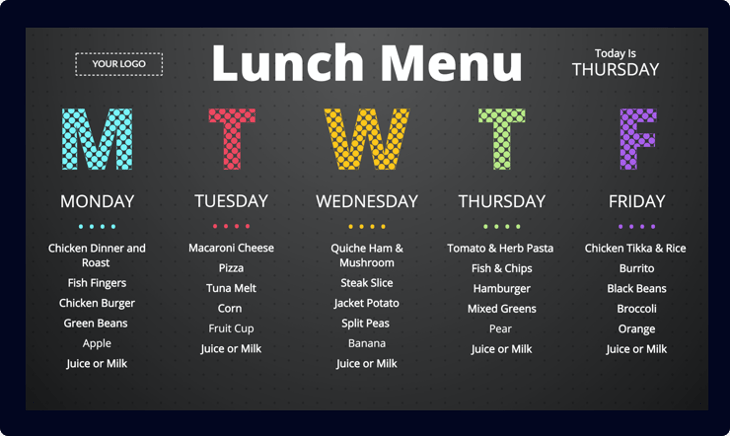
Get started with this lunch menu digital signage template here.
Manage emergency responses
When there’s a school emergency, administrative staff have to be everywhere at once, being all things to all people. Incoming information from relevant agencies has to be understood, repackaged and passed on to teachers and students, parents and other stakeholders, quickly and accurately.
The nightmare scenarios are major events like fires or active-shooter situations, but weather-based emergencies are much more common — and they don’t have to be hurricanes, or even take place directly on school grounds. A flooded expressway or power outages across town can impact public transportation or cut the school off from commuting parents, leaving kids stranded for hours. The effects can be felt even if the event never actually takes place: even tornado or flood warnings can disrupt transport.
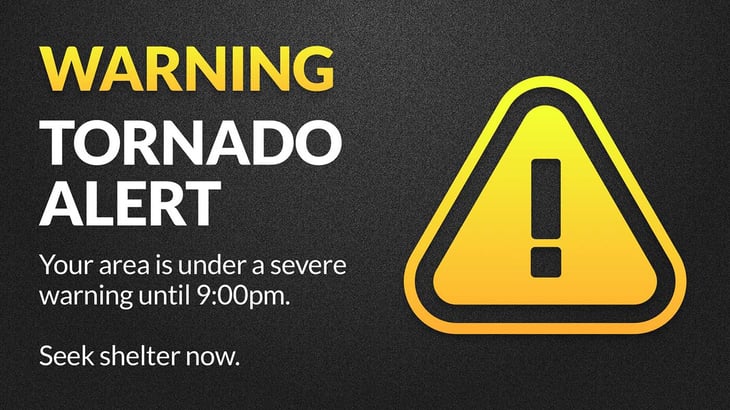
Get started with this emergency alert digital signage template here.
When events like this happen, administrators’ time is a precious resource. (Obviously, that’s even more the case if it really is a nightmare scenario.) Digital signage can be used to transmit live updates as local authorities monitor the situation, so kids are updated about whether the roads are clear or the L-train is back running.
It can also be used to help nudge behavior in a better, more constructive direction or remind students and teachers of emergency plans, helping everyone keep calm and constructive.
Navigating and wayfinding
At the other end of the urgency spectrum, there’s the constant low-level hum of visitors who can’t find their way around the school campus. It’s not their fault, obviously, but each interaction with someone who just needs pointing to the bathroom costs admins 20 minutes or more in distraction time. There’s a massive bulge in such requests at the beginning of the school year when new students, sometimes in their hundreds, move up from their last school and need to find their way around a new campus that they sometimes find scary as well as disorienting.
In many cases, visitors aren’t sure what to do with themselves in school lobbies. A welcome sign that helps soothe and establish expectations can help orient visitors while they wait for admin staff to come to the front desk.
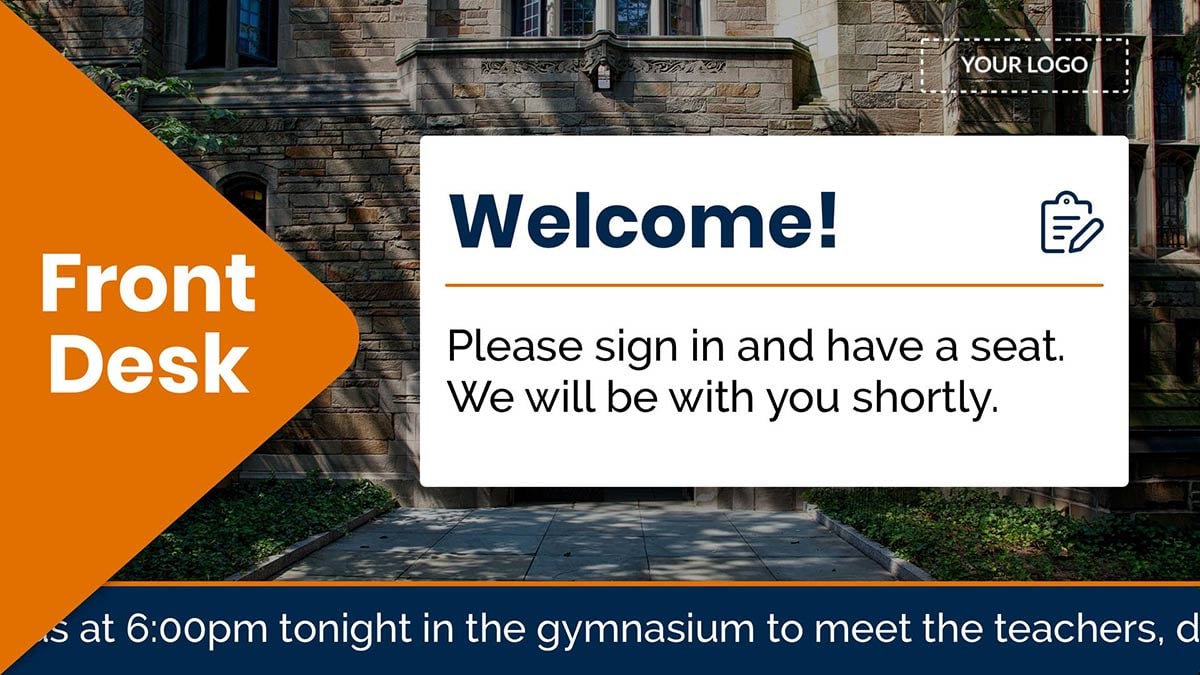
Get started with this front desk digital signage template here.
Digital signage can’t sign visitors in or help calm quietly distraught newcomers. But for people whose problems begin and end with finding the auditorium, the bathroom, or the principal’s office, a school map showing your location or a breadcrumb trail to common destinations can save hours of admin time.
Integration and culture
Schools often assume that their students speak good English. After a few months, it often turns out to be a self-fulfilling prophecy, as children who speak English as a second or additional language learn social English rapidly from their peers by immersion.
In areas with large immigrant populations, however, there are tranches of students who suffer from their less-developed English skills. In California, ‘29% of immigrants live in households where no one older than age 13 speaks English “very well.”’ That has effects on educational attainment and on school cohesion, making it hard for students whose English isn’t good to participate in school life and interact positively with their peers.
Just as digital signage can help reorient students who are physically lost on campus, it can also help students with less-good English find their feet, perhaps by displaying signage in English and Spanish, English and French, or a range of languages. It can also help encourage more positive interactions between students.
Digital signage for marketing
Schools typically don’t focus much on marketing and lack both the time and the skills to do much about it, in many cases. Yet marketing and branding are of increasing importance in schools.
Word of mouth is one of the most effective and cost-effective marketing channels, and schools can take advantage of it using their existing digital signage systems by displaying positive messaging about their school.
Parents are often concerned with exam grades and scholarships, but just as often with school environments that foster learning and development. Digital signage can help you develop a positive school culture and good academic attainment; it can also help you advertise it, and visitors can pass on the details to family and friends for you!
Conclusion
Digital signage can help media specialists and administrators leverage their time and effort more effectively, increasing the impact of their work. It can also make that work easier and simpler to perform. It’s a good choice for communication and messaging schoolwide, but comes into its own when you have to segment messaging by audience — or when you need the right message, for the right audience and at the right time. By using centrally controlled digital signage, media specialists and administrators can drive the outcomes that matter most to them and to the school.


